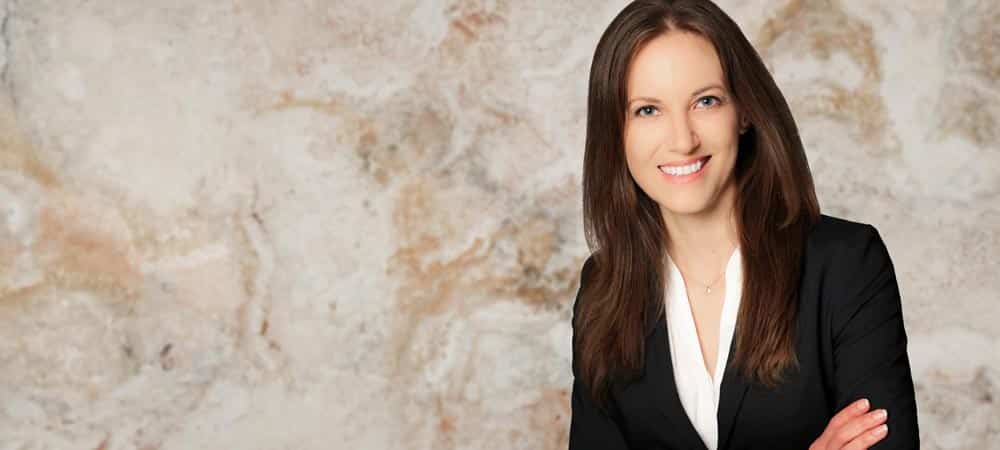Billing and Revenue Innovation


The digital transformation has triggered many trends. One important but little-noticed trend is the new position of CFO, which used to be primarily responsible for accounting, balance sheets and controlling.
Jochen Schwabe from Schwabe, Ley and Greiner, a consultancy firm in the field of finance and treasury management, emphasized this "new" responsibility of the CFO at an SAP partner event in Hamburg.
According to Jochen Schwabe, the "new" CFO has end-to-end responsibility in the area of e-commerce and the CFO must actively participate in the design of new business processes in the area of digitalization.
Payments and Treasury
"The Future of Payments" was the title of Jochen Schwabe's presentation in Hamburg and his call to the "new" CFO: centralize processes, avoid fraud, expand specialist and IT expertise, support the core business - make treasury the central element of successfully operating companies and actively participate in the digital transformation.
One of many SAP tools for financial management in the digital transformation is BRIM - Billing and Revenue Innovation Management (formerly Hybris Billing).
SAP partner GTW is the leading provider and project manager of BRIM in German-speaking countries. Hardly any other consulting company has as much and as comprehensive experience with billing and revenue innovation.
In an exclusive interview, Jasmina Cejan, Principal Consultant at GTW Management Consulting, explained the strategy and use of SAP BRIM.
In a survey, Jochen Schwabe found that 93 percent of users expect greater process efficiency from the digitalization of treasury (see chart).
It is precisely this increase in efficiency that Billing and Revenue Innovation Management should also enable existing SAP customers to achieve.
"Current sales models require a highly networked and up-to-date database with the possibility of high-performance data analysis as the basis for sales success"
Jasmina Cejan knows from many successful projects.
"SAP BRIM meets these requirements in every respect and makes it possible to present the entire Offer2Cash chain in more detail and more comprehensibly than ever before."
Customer behavior and pricing
Thanks to a wide range of fast evaluation options, BRIM users can incorporate customer behavior directly into quotation and pricing and thus offer flexible, customer-specific products.
"The trend continues to move away from the purchase of a fixed ownership claim towards rental, leasing and subscription models"
Cejan explains the trends on the market. With these market models, products can be tested by consumers and cognitive dissonance can be significantly reduced.
"SAP BRIM is the ideal SAP product for flexible product and pricing design"
she describes the task.
SAP BRIM is revolutionizing conventional billing. BRIM makes it possible to design the billing process flexibly and with high performance in order to process higher transaction volumes without having to forego the integration of existing billing systems.
For example, SAP BRIM offers comprehensive functionalities for subscription order management, flexible pricing, automated invoicing, convergent invoicing and personalized payment processing in order to implement digital business models and optimize these processes.
Some typical industry billing scenarios that have already been implemented with GTW's technical experts are intended to show how flexibly SAP BRIM can be used in practice.
The "Contract Accounts Receivable and Payable" component comprises a subledger, which was originally developed for industries with a very large customer base and a correspondingly high volume of documents with mass data processing.
This makes SAP BRIM predestined for use in insurance, utilities, telecommunications and media companies as well as in the public sector.
"Thanks to the high degree of automation and integration, the SAP-BRIM solution is an enabler and driver for digital transformation in a company"
is how Jasmina Cejan describes the market situation. A 360-degree view puts the customer at the center of the action and thus binds them to the company.
New customized products can be modeled in BRIM and launched on the market within a very short time, which provides an enormous competitive advantage.
"Thanks to SAP's best practices approach, the majority of requirements in many industries can be covered with preconfigured processes"
Cejan knows from her project work, and she adds:
"BRIM could be the leading billing system for every customer journey."

Price, contract and invoice
Consumers are bombarded with advertisements on a daily basis. If they are interested in a product, they research different variants and order it - either online or in stores.
"With the purchase, the contract is created, the price is calculated, the invoice is created and posted - exactly what SAP BRIM does, and of course even more"
she describes a task of Billing and Revenue Innovation Management.
SAP BRIM and Hybris Billing belong together. Jasmina Cejan explains the history:
"Hybris has been part of the SAP suite since 2013 and has undergone many name changes in recent years. In 2015, BRIM was renamed Hybris Billing to put the customer at the center and bring BRIM onto a Hana platform for simplification.
In order to complete the focus on the customer, solutions managed under SAP Hybris were merged with other acquired solutions under the new name C/4 Hana in 2018. The C stands for 'Customer' and the four for fourth-generation CRM.
With C/4, SAP offers a strong front end integrated with a powerful S/4 Hana back end to cover the entire customer management process.
As part of this realignment and because there was often confusion with SAP Hybris Commerce, SAP Hybris Billing was renamed again and has been renamed SAP Billing and Revenue Innovation Management, BRIM."
BRIM for ERP/ECC and S/4
SAP BRIM based on S/4 versus ERP/ECC 6.0 differs in the SAP CRM component. This is directly integrated into S/4 and is called Customer Management.
This eliminates the replication of master data, as is necessary in ECC, middleware is no longer required and no objects are duplicated.
"BRIM is not part of C/4, but belongs to the S/4 Hana world"
explains Jasmina Cejan.
"However, this does not mean that BRIM cannot be integrated into the cloud. Solution components are available in C/4 that allow BRIM functionalities - e.g. subscription billing - to be consumed from the cloud, regardless of whether the customer has an ECC or S/4 system. However, C/4 can also be provided as a standalone system without an SAP ERP back-end."
Important for long-standing SAP customers: SAP BRIM is therefore available in ERP/ECC 6.0 and SAP Business Suite as well as S/4, regardless of whether on-prem or in the Microsoft Azure cloud, for example. There is also a C/4 solution for subscription billing consisting of BRIM components.
"The advantage of the S/4 system is that customer management is based on the same data model as S/4 Hana, and it uses S/4 components such as pricing and billing.
This eliminates the entire replication of master data, middleware is no longer required and no objects are duplicated. The functions of the Hana database are optimally utilized"
explains Principal Consultant Cejan.
The current challenge facing almost all existing SAP customers is the business, organizational and technical transformation.
BRIM can be used more flexibly in the SAP architecture than almost any other IT tool. But BRIM is also the perfect answer for content-related digital transformation:
"Many of our existing customers are currently facing the challenge that their business is undergoing a transformation from product to service orientation and business models that have functioned for decades have become obsolete within a very short space of time and their value chain has changed radically"
observes Jasmina Cejan in the SAP community.
Customers have gained enormous power thanks to the wide range of information available on comparison portals on the internet - competition between providers has intensified. Customers expect customized product and price models, excellent customer service and uncomplicated, usage-based billing.
Jasmina Cejan says that BRIM is an excellent solution for mapping the new pricing and billing models such as pay-per-use, subscriptions, bundles etc. and also enables real-time pricing.
With the BRIM solution, customer requirements can be implemented better and faster, throughput times reduced and costs saved. High volumes of data can be processed efficiently.
Offer2Cash
Jasmina Cejan explains in the E-3 interview the market requirements that the Offer2Cash process already begins in the web store. Most consumers see something on the Internet and order online.
The potential customer doesn't have much time left and wants to do everything quickly - whether it's a purchase or signing up for a subscription.
The quickest option is to select the product or subscription online, enter personal data and confirm the terms and conditions - a new contract is then created, an invoice is created and posted in SAP FI-CA in line with accounting requirements.
If the customer does not pay, further steps such as reminders, debt collection, etc. follow. And what does BRIM do in this E2E process?
"BRIM can cover the entire chain: from customer and contract management and product configuration in SAP Customer Relationship Management, pricing in SAP Convergent Charging, billing of services used and invoicing in SAP Convergent Invoicing to the management of open items and classic subledger processes in Subledger Contract Accounting (SAP FI-CA)"
Cejan describes a possible business process.
BRIM and use case
Finally, the question to Jasmina Cejan: What was the most convincing use of SAP BRIM for you?
"There are many interesting use cases, but the most convincing from my point of view is the implementation of a broker model. It is an international online platform where developers and end customers meet.
Developers from different countries use this online platform to sell their apps to end customers in a similar way to the Google Play Store, where games, apps and even films, series, books and music for Android phones can be purchased.
In the background is the SAP-BRIM solution, which ensures that invoices are issued to the end customer on behalf of the developers and invoices are issued to developers with commission deducted, payments are transferred from the customer to developers and the developer's commission remains with the owner of the broker model.
Tax processing is also a very important aspect, as both the developer's and the end customer's place of residence must always be taken into account.
If the customer or developer is based in the USA, for example, tax processing via a jurisdiction code and an external tax system such as Vertex is also necessary."
SAP CI, CC and CM
SAP Convergent Invoicing (CI) consists of two components, billing and invoicing. CI is an additional component of Contract Accounts Receivable and Payable and offers the possibility of mapping complex and convergent billing and invoicing processes.
CI manages the billable items, e.g. from SAP Convergent Charging or other upstream systems, and combines them into billing documents - these represent the items on the invoice.
Invoicing processes the billing documents, which can originate from different SAP (SD billing, CRM billing) and non-SAP billing systems, creates the convergent invoice and posts the invoice amounts to the subledger contract accounts receivable and payable.
It is also possible to transfer the history of physical products from existing SAP SD orders and aggregate them into an invoice using services in Convergent Invoicing.
SAP Convergent Charging (CC) handles both charging (determining the contract partner or tariff) and rating (evaluating events and consumption), especially for large transaction volumes.
In CC, usage transactions are processed in real time or in batch, one-off and recurring charges are calculated and orders are managed. The result is the billable items provided by the billing system.
SAP Convergent Mediation (CM) is an independent system within the BRIM solution for the preparation, normalization and distribution of usage transactions.
The solution aggregates and consolidates the raw data from the networks into usable information for CC and other downstream systems.
SAP CM networks the individual components and provides comprehensive functions that ensure that external and internal systems can communicate with each other as effectively as possible.







